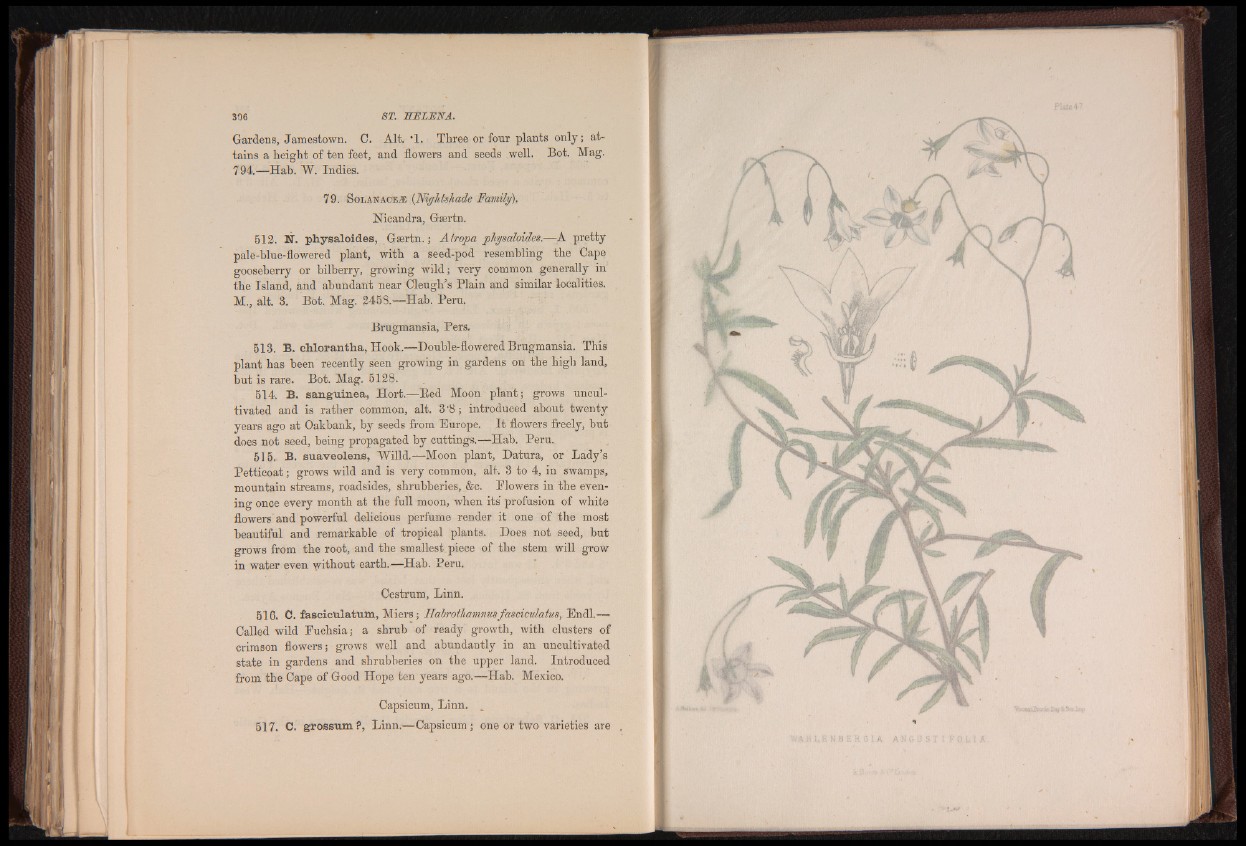
Gardens, Jamestown. C. Alt. ’I. Three or four plants only; attains
a height of ten feet, and flowers and seeds well. Bot. Mag.
794.—Hab. W. Indies.
79. S o l a n a c e j E (Nightshade Family).
Nicandra, Gsertn.
512. N. physaloides, Gsertn.; A tropa physaloides.—A pretty
pale-blue-flowered plant, with a seed-pod resembling the Cape
gooseberry or bilberry, growing wild; very common generally in
the Island, and abundant near Cleugh’s Plain and similar localities.
M., alt. 3. Bot. Mag. 2458.—Hab. Peru.
Brugmansia, Pers.
513. B. chlorantha, Hook.—Double-flowered Brugmansia. This
plant has been recently seen growing in gardens on the high land,
but is rare. Bot. Mag. 5128.
514. B. sanguinea, Hort.—Bed Moon plant; grows uncultivated
and is rather common, alt. 3‘8 ; introduced about twenty
years ago at Oakbank, by seeds from Europe, It flowers freely, but
does not seed, being propagated by cuttings.—Hab. Peru.
515. B. suaveolens, Willd.—Moon plant, Datura, or Lady’s
Petticoat; grows wild and is very common, alt. 3 to 4, in swamps,
mountain streams, roadsides, shrubberies, &c. Flowers in the evening
once every month at the full moon, when its' profusion of white
flowers and powerful delicious perfume render it one of the most
heautiful and remarkable of tropical plants. Does not seed, but
grows from the root, and the smallest piece of the stem will grow
in water even without earth.—Hab. Peru.
Oestrum, Linn.
516. C. fasciculatum, Miers; llabrothamnusfasciculatm, Endl.—
Called wild Fuchsia; a shrub of ready' growth, with clusters of
crimson flowers; grows well and abundantly in an uncultivated
state in gardens and shrubberies on the upper land. Introduced
from the Cape of Good Hope ten years ago.—Hab. Mexico.
Capsicum, Linn.
517. C. g ro ssum ?, Linn.-—Capsicum; one or two varieties are